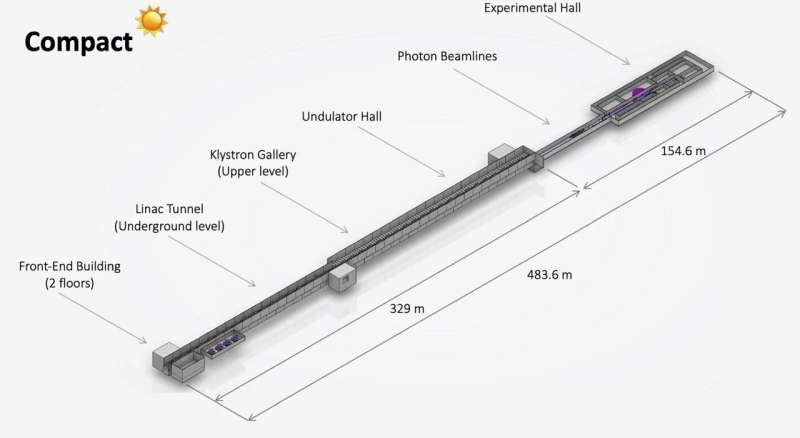

Many advances in structural science since the 1970s were made by probing materials with synchrotron radiation: that is, high energy X-rays generated through accelerating high-energy electrons. The latest generation of such sources, X-ray free electron lasers (XFEL), are far more powerful than their predecessors but are only accessible to international consortia and a few rich countries because of their high cost.
Now, an international group of experts has prepared a design for a more compact and cost-effective XFEL system accessible to small countries and, perhaps, some individual laboratories. The design is published in The European Physical Journal Special Topics.
The first three generations of these high-energy X-ray sources were generated using synchrotron radiation sources: particle accelerators in which electrons travel around a fixed circular path and are stimulated to emit photons of electromagnetic radiation—typically, but not always, in the X-ray range—by powerful magnets.
Free electron laser technology, by contrast, involves electrons accelerating along a linear path between an array of powerful magnets termed an undulator. This stimulates the electrons to produce very short pulses of exceptionally high-energy X-rays, far more intense than those generated by synchrotron sources.
The CompactLight design study involved a consortium of 31 institutions, mostly based in Europe and including 23 academic or public sector laboratories and five private companies.
The consortium included the community of academic and industrial prospective users in designing their specifications so that, as far as possible, it is appropriate for current and envisaged future applications spanning physics, chemistry, materials science, and structural biology.
The published design is just under 500m long, or about two-thirds of the length of the SwissFEL near Zurich. More importantly, it can be constructed for about 7.5 million Euros, a fraction of the cost of the Swiss facility. XFEL sources built to this specification should bring this innovative and important technology within the reach of thousands more scientists worldwide.
More information:
G. D’Auria et al, The CompactLight Design Study, The European Physical Journal Special Topics (2024). DOI: 10.1140/epjs/s11734-023-01076-0
Citation:
Designing a cost-effective X-ray free electron lasers facility (2024, April 12)
retrieved 12 April 2024
from https://phys.org/news/2024-04-effective-ray-free-electron-lasers.html
This document is subject to copyright. Apart from any fair dealing for the purpose of private study or research, no
part may be reproduced without the written permission. The content is provided for information purposes only.